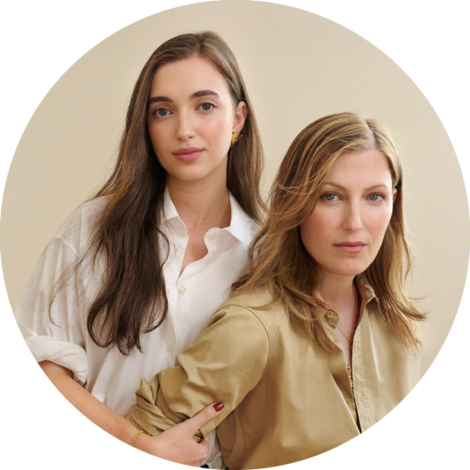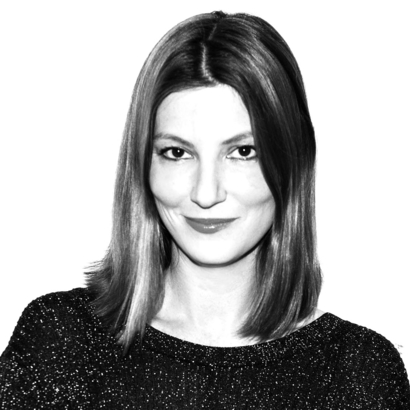I can hardly imagine my 20s in New York without a glass in my hand. Vodka tonics at the Beatrice Inn; whatever was on tap at Mars Bar; champagne at Bungalow 8. Always athletic, especially after a night on the town, I believed I was mitigating the inconvenience to my liver by “running it off” or “sweating it out.”
The aging process made this all much less appealing, and in my 30s, drinking became relegated to restaurants and dinner parties. Now that I’m 42 and tired of feeling tired, it’s been demoted yet again—special occasions only.
I’m tempted to state clearly for the record that I don’t have a drinking problem! Unless maybe I do. Because we all do. Whether we’re talking about a cocktail to end the workday, a rosé-fueled brunch, or a full-blown bacchanalia followed by a days-long hangover, alcohol is causing problems.
The science is clear: it’s never a wise choice. In January 2023, the World Health Organization issued a damning statement, supported by reams of data, in Lancet Public Health: “No level of alcohol consumption is safe for our health.” It is extensively documented that alcohol can cause breast, gastrointestinal, oral, and colon cancer. There’s also its cozy relationship with liver and heart disease, metabolic conditions, anxiety and depression, and disrupted sleep. As any fan of the Real Housewives franchise can appreciate, it also has an ugly little habit of complicating relationships, occasionally through violence.
And yet 80 percent of Americans aged 18 and older living in households earning $100,000 or more say they drink, according to recent data. The higher the household income, the more alcohol is consumed. The nationwide average is 63 percent; we’re swilling less than we did in the sloppy 70s, but not by much—just 8 percentage points. Compared with 2003 rates, more Americans aged 55 and older are drinking, but the trend is reversed for those aged 18 to 34.
For those of us who are old enough to remember AOL, drinking has been a way of life. When I was a teenager, in the 90s, hard drugs—“crack” cocaine and heroin—were the bad guys. (Remember the P.S.A. of a frying egg: “This is your brain on drugs”?) The public-health messaging around alcohol fixated on drunk driving and lowered inhibitions.
The media spread the notion that in Boozeville, there’s something for everyone. Beer for sports, wine for courtship and connoisseurship, champagne for celebrations, stiff, old-timey cocktails for existential crises. And all of it was glamorized.
I never felt any real guilt or anxiety about my drinking—which, at three or four drinks a week in recent years, would have qualified as “light”—until last August, when Andrew Huberman’s Huberman Lab podcast released one of its most alarming episodes, “What Alcohol Does to Your Body, Brain & Health.”
Among its takeaways: even low to moderate levels of consumption—one or two drinks a day—is linked to the thinning of the brain’s neocortex. And alcohol’s damage to the prefrontal cortex and neural circuitry can’t be reversed unless we give it up altogether. For every 10 grams of alcohol consumed per day, there’s a 4 to 13 percent increase in the risk of breast cancer among women. And alcohol’s effects on the pituitary and adrenal glands can elevate cortisol levels, causing us to be more sensitive to stress.
There was much more—the podcast was two hours long. But was the bad news really that surprising? Why would we expect a substance that causes poisoning to have no long-term consequences? No wonder the Canadian health authorities revised their recommendations last year to up to—but no more than—two drinks a week.
Post-Huberman, I adopted a drink-when-it-matters approach. No meaningless glasses of wine at bad cocktail parties—instead, I’d save it for worthy occasions. Yes, I did savor four glasses of champagne at my birthday party, and yes, the aftershocks were so vile that I haven’t had a drop in nearly two months. But even so, I’m not quite sure I regret those good times. Even if I don’t exactly remember all of them.
For those of us who are old enough to remember AOL, drinking has been a way of life.
The celebratory drink isn’t going anywhere, especially at Il Pellicano, the style set’s unofficial holiday headquarters on the coast of Tuscany. “Our guests, immersed in the bliss of vacation, consistently indulge in a little extra,” says bartender Federico Morosi, whose Bellinis, Negronis, and martinis are the toast of Instagram. “But these libations are savored with discernment.” In his universe, just two—ideally enjoyed with a tangle of spaghetti al limone.
Mostly sober me is not as fun as I used to be; even my husband admits that he likes me a little looser. But at least I’m not alone. Many of us are in the thrall of science-slash-everyone’s favorite associate professor of neurobiology and ophthalmology. When I saw my friend at dinner for the first time in months, we both, to our mutual surprise, ordered sparkling water. “To Andrew!” we toasted, clinking glasses.
The savvy liquor industry has responded by drumming up plenty of fancy drinks in good-looking bottles to fill the shelves at Boisson, a shop specializing in non-alcoholic spirits. (It now has five locations in New York City and counting.) Dry January is gaining in popularity. Now we also have Sober October, and “casual sobriety”—an intriguing new idea popularized by hipsters and mulled over in Vice—is right up there with terms like “throuple.” There are apps—I Am Sober, Reframe, and Dryy—that use neuroscience to scaffold sobriety, and there are even sober-positive influencers like Annie Grace (@thisnakedmind) and Jessica Landon (@jessicalandon12), who pick up more followers all the time.
Even the French may be warming to the idea. Recently, I was at La Grande Épicerie de Paris, a heavily art-directed grocery store owned by LVMH, and observed the locals draining samples of French Bloom, a non-alcoholic champagne. “C’est pas possible!” they marveled while tucking bottles into their baskets.
In London, where I now live, the clichés about the Brits—especially my journalist colleagues—and their drinking tend to be true. But there, too, things may be changing. “Before, a guest not drinking alcohol could feel out of place,” says Mickael Perron, the manager at the Lanesborough hotel’s always-heaving Library Bar. “Now, the approach is a lot more inclusive, less judgmental—everyone feels welcome.” Perron recently introduced an alcohol-free mixology class, which is popular with patrons of all ages.
It’s funny. I still feel a little awkward turning down a drink. But like all habits, it gets less fraught with time and practice. And thank God I live in England, where an almost comic reverence for manners means that no one has ever questioned my choices. (If they do, I’ll give my reasons and forgive them when they respond, “How terribly American!”)
But then the low-A.B.V. lifestyle has a few surprises. I recently ordered the non-alcoholic pairings at Cycle, the new restaurant in Tokyo from superstar chef Mauro Colagreco. The complex kombuchas, herb-infused tonics, and teas elevated the flavors of each dish to such heights that my husband, who went with the wine, was envious.
Looking back, it seems baffling that I spent so much time, energy, and money eating organic everything and sourcing formaldehyde-free nail polish and yet saw nothing wrong with regularly eradicating my gut flora with a few glasses of ethanol. I managed to give up Diet Coke for the sake of my health. Surely this, too, is worth a shot.
Ashley Baker is a Deputy Editor at Air Mail and a co-host of the Morning Meeting podcast





